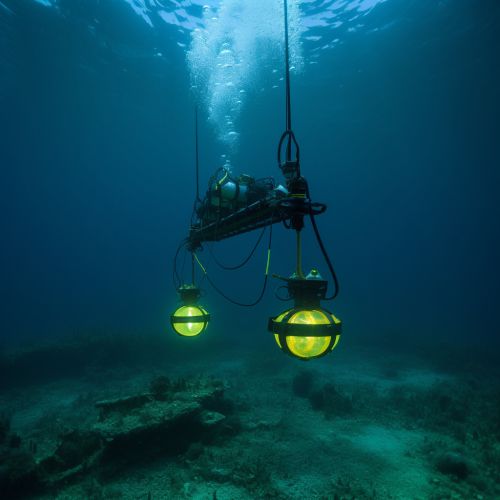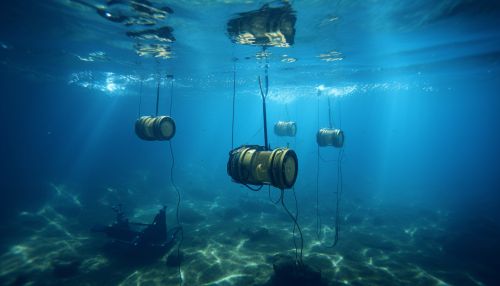Underwater Acoustics
Introduction
Underwater acoustics is the study of the propagation of sound in water and the interaction of the mechanical waves that constitute sound with the water, its contents, and its boundaries. The water may be in the ocean, a lake, a river or a tank. Typical frequencies associated with underwater acoustics are between 10 Hz and 1 MHz. The propagation of sound in the ocean at frequencies lower than 10 Hz is usually not possible without modifying environmental factors, such as cross winds or temperature.
Acoustic wave propagation
The propagation of sound in the sea is influenced by many factors. These include the physical properties of the water itself, as well as the presence of marine life, the bottom of the sea, the surface of the water, temperature, salinity and pressure. The speed of sound (also known as acoustic velocity) in seawater depends on the temperature, salinity, and pressure (or depth). This speed is approximately 1500 meters per second.


Sound generation and reception
Sound is generated in the underwater environment by a variety of sources, including the breaking of waves, rain, and anthropogenic sources such as ships and sonar. Marine animals also produce sound, either intentionally or unintentionally. For example, some fish species create sounds by grinding their teeth or by rapid movement of their swim bladder. Whales and dolphins are known for their vocalizations, which they use for communication and for echolocation.
Sound reflection and scattering
Sound waves that encounter a boundary between two different materials may be either absorbed by the material they encounter, reflected back into the material they came from, or refracted (bent) as they pass into the new material. In the ocean, there are many such boundaries, which can either be discrete (e.g., the surface and the sea bed), or gradational (e.g., a continuous change in temperature or salinity with depth).
Underwater acoustic applications
Underwater acoustics is used in many fields. In science, it is used in oceanography, marine biology, and as a means to detect and locate underwater earthquakes. In commercial applications, it is used in oil and gas exploration, surveying for the laying of pipelines and cables, and for the charting of the sea floor. In the military, it is used for navigation, communication, and the detection of submarines and mines.
